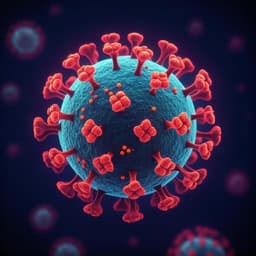
Medicine and Health
Tracking the introduction and spread of SARS-CoV-2 in coastal Kenya
G. Githinji, Z. R. D. Laurent, et al.
This exciting research from coastal Kenya reveals the dynamics of SARS-CoV-2 with 311 genomes sequenced between March and July 2020. Multiple introductions, primarily from Europe, highlight a dominant lineage B.1 and underscore the impact of early public health responses. Discover how undetected introductions led to local epidemics, conducted by a team of dedicated authors.
~3 min • Beginner • English
Related Publications
Explore these studies to deepen your understanding of the subject.







